Clips are useful for holding one or more objects together while also being used to secure something in place. The most common clip is perhaps the wooden spring-loaded one we use to hang clothes – this may have been the first thing that came to mind when you read the word “clip.”
You can find clips in all shapes and sizes that people use for much more than just hanging clothes. Clips are useful when you want to tie your hair up, attach a bunch of papers together, or make a bag airtight. However, the possibilities don’t end there. In this article, we’ve included many general-purpose 3D printed clips but also some with unique applications.
If you see a clip that you’d like 3D printed but don’t have the means to do so, head over to Craftcloud. You’ll be able to choose from a variety of materials and finishes, plus you’ll know that your model will be of the highest quality.
Now, without further ado, let’s get to the list. Don’t get too attached!
Bag
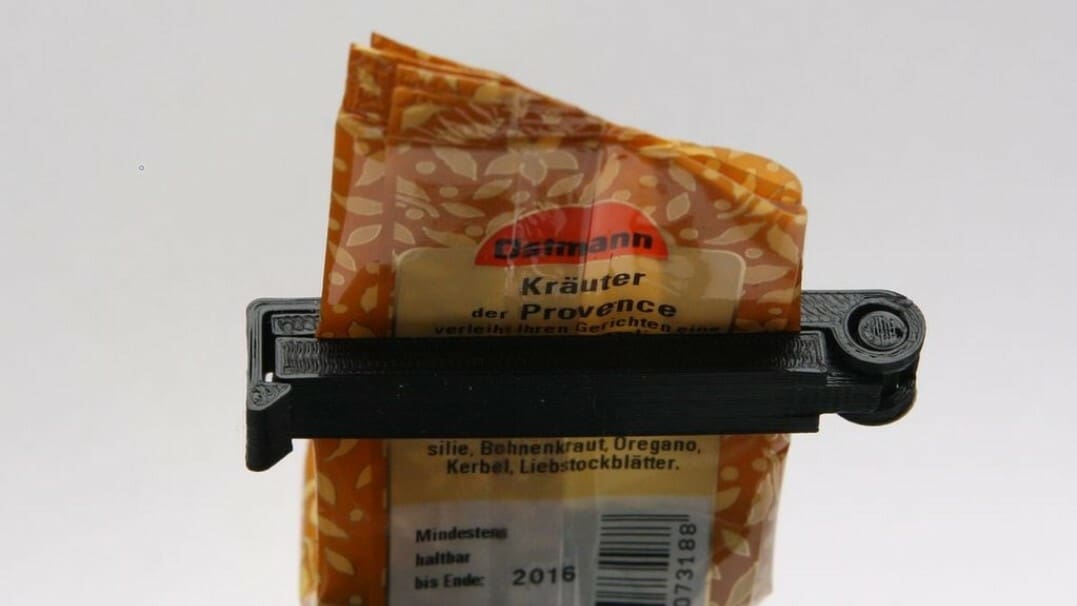
First up, we have the very practical bag clip. It reseals any bag that will fit inside its jaws, keeping the contents fresh and secure. The clip isn’t just for keeping food bags sealed either; it works with any soft flat material. Use it to bind pieces of paper together, secure rolls of ribbon, a money clip, or anything you can think of!
The clip was designed to be printed in PLA, but ABS, PETG, or even more exotic materials like nylon and polycarbonate (PC) should also work. The clip comes in multiple sizes and can be printed in one piece without supports.
- Who made it? MasterFX
- How printable/popular is it? This popular model has 305 posted makes and 36 remixes. There are also dozens of comments with a common consensus on how well the model prints.
- Where to get it? Thingiverse
We Also Like…
This bag clip with screw cap is better suited for bags that you use regularly. The clip seals the bag tight while the cap can be removed, allowing you to pour what you need without having to remove the entire clip. You might want to opt for some food-safe filament and 3D printing practices before you get started.
Ethernet Clip
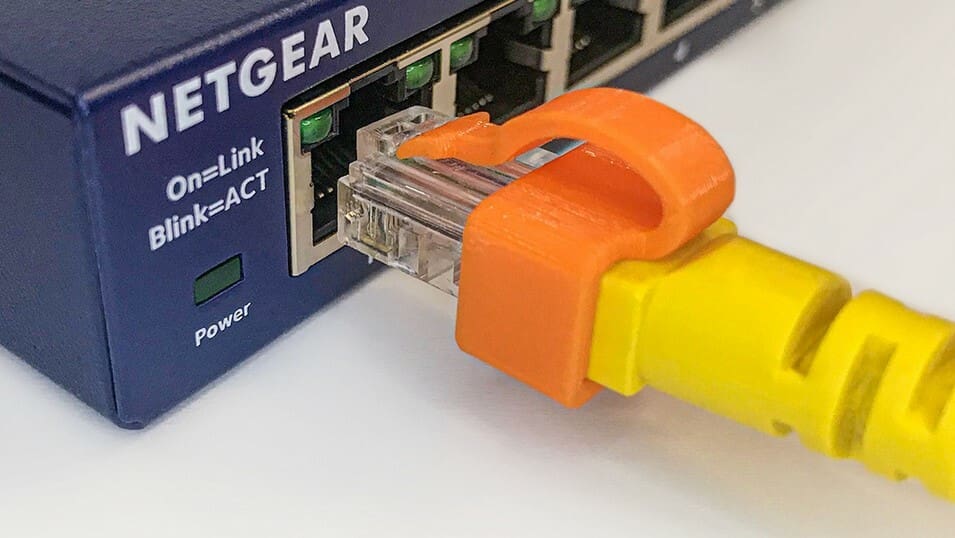
This straightforward and tiny clip is designed to replace the easy-to-break locking tab on the modular connector at the ends of an Ethernet cable. A broken locking tab prevents the modular connector from remaining secure in its socket and is prone to falling out or working loose, which happens all too regularly.
The clip should be printed in any rigid filament like tough PLA, ABS, or PETG. The designer recommends printing with 20% infill and with supports.
- Who made it? guss67
- How printable/popular is it? With close to 41,000 downloads, 43 makes, and over 10,000 likes, this clip is surely used by many.
- Where to get it? Thingiverse
We Also Like…
If you found the first clip a little too challenging to print, then this Ethernet repair clip may be what you need. It requires no support and provides the same functionality!
Cable
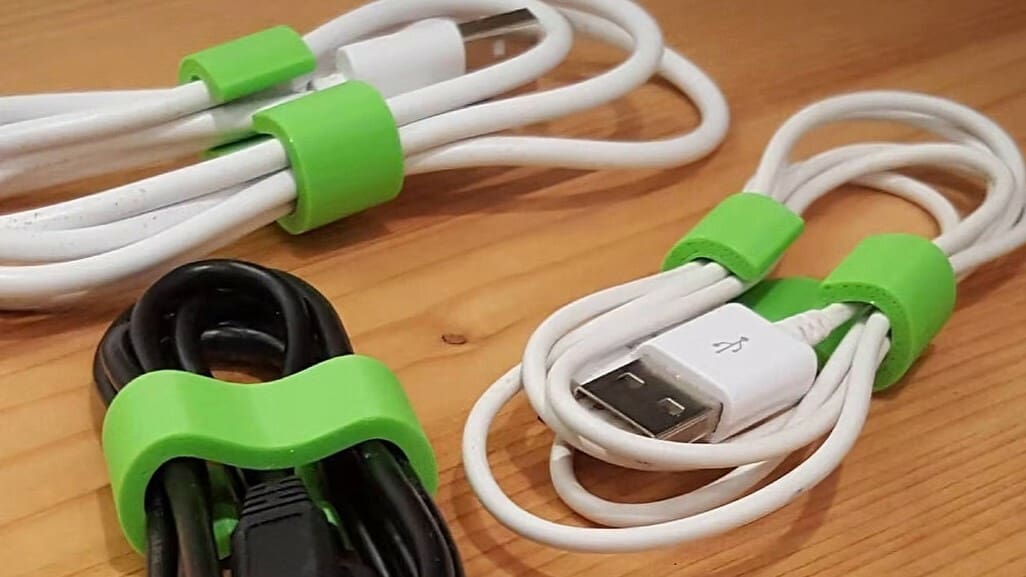
This very simple but clever clip is designed to keep cables tidy. It does this using only the cables’ own resistance to bending to keep it in place. A few dozen of these clips could be used to bring some order to the chaos, which most, if not all, cable boxes end up in.
The model would print well in PLA without supports or a raft. The designer recommends a 20% infill.
- Who made it? compute4you
- How printable/popular is it? The model has been downloaded more than 12,100 times, and there are 3 posted community makes.
- Where to get it? Cults
We Also Like…
If you need to keep multiple cables organized on and off of your desk, then this cable organizer clip should do the trick. The model has slots for up to 10 cables that you can keep separated from each other for easy management.
Clothes
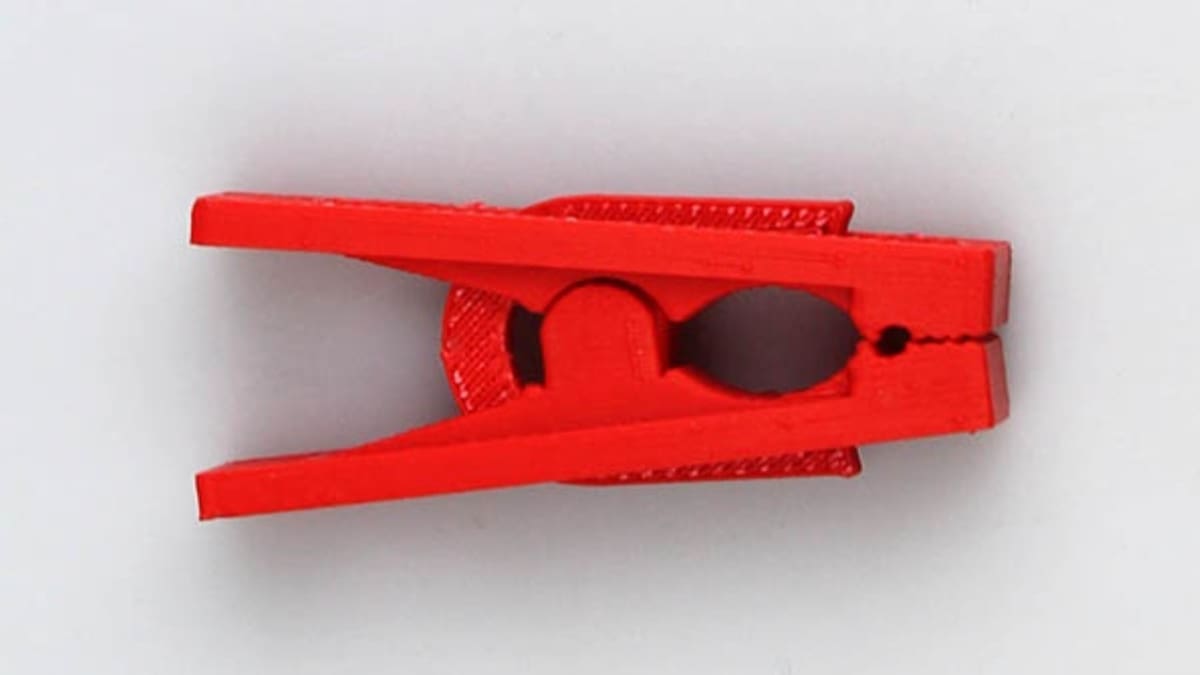
You must have expected that a list of clips would include a clothespin! The cool thing about this one is that it’s entirely 3D printed; no springs here. Maybe you want clothes pegs in a particular color or you don’t like going out to purchase new pegs when the old ones inevitably break. Whatever the reason, with this model, you can make your own!
The designer suggests printing in ABS, however, this might not be the best choice if you’re hanging things in direct sunlight. An alternative is to print this model in ASA filament, which has inherent UV and water resistance but is otherwise similar to ABS. The designer also recommends a 0.2-mm layer height and 100% infill.
- Who made it? 3dPH printer
- How printable/popular is it? Around 1,800 people have downloaded this model. Two makers from the community have posted makes, with one commenting that the clothes pegs printed well for them and that they’ve printed multiple copies.
- Where to get it? MyMiniFactory
We Also Like…
For a simplified print, you could go with this multi-purpose clothes clip. It prints flat, in one piece, and has just enough strength to keep your clothes on a clothesline. We’re sure you could find plenty of other uses for this clip as well!
Carabiner
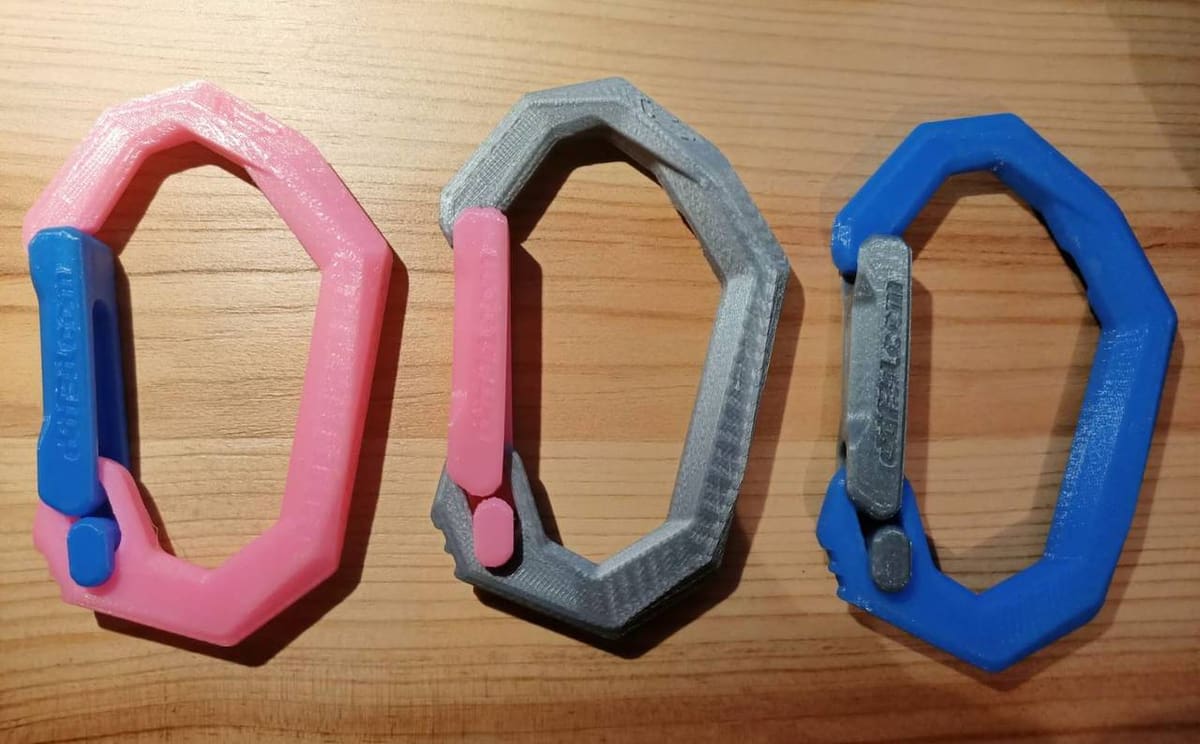
Carabiners securely attach one object to another and are incredibly useful. This model allows you to print your own lightweight carabiner, made up of two 3D printed parts. This design should be suitable for carrying lightweight objects, although it should be noted that it isn’t load rated.
The designer recommends printing with PLA or ABS with 50% infill and three or more shells.
- Who made it? Charlie1982
- How printable/popular is it? Close to 440,000 people have downloaded this model and nearly 640 people have shared prints of this incredibly popular design.
- Where to get it? Thingiverse
We Also Like…
This print-in-place carabiner is a much faster and easier-to-manage print for most printers. The compliant design will give it just enough strength to self-close, making it perfect for clipping lightweight items to your belt loops or backpacks.
Shark-Shaped
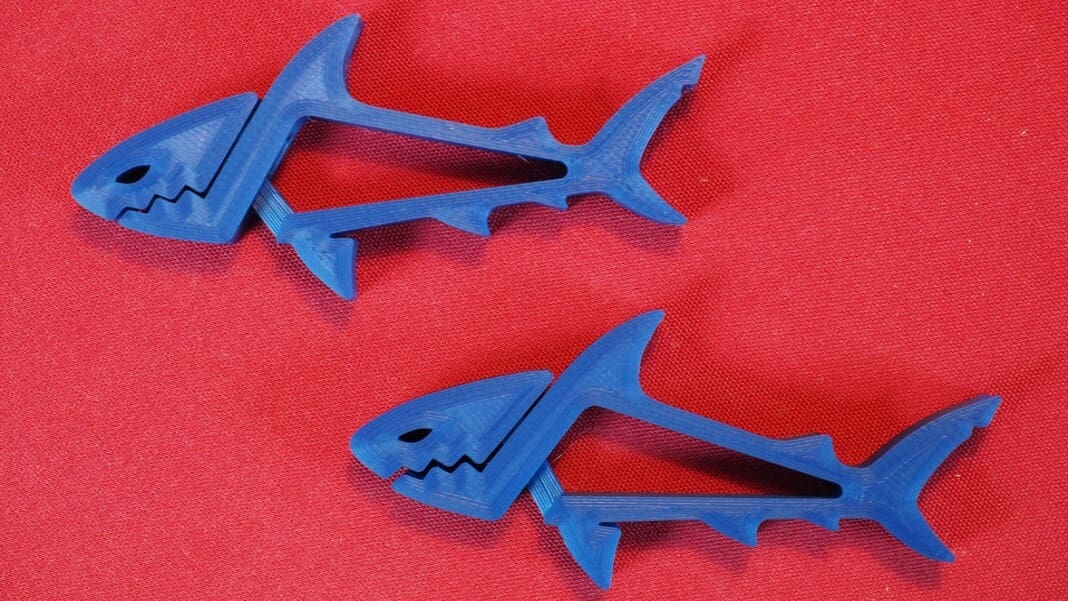
This is a fun little clip that can be used for all sorts of clipping purposes. It would be cool to hang up some pictures in a kid’s room, for example. If you aren’t the biggest shark fan, the designer also lists on the model page several other similar designs with different animals, including a miniature dinosaur and an eagle.
It’s recommended to print these creatures with a raft at 60% infill and with four shells. The print should work with any rigid filament. The designer and a number of commenters have used PLA.
- Who made it? muzz64
- How printable/popular is it? This model has an unbelievable 778 posted makes and has been downloaded over 218,000 times so far.
- Where to get it? Thingiverse
We Also Like…
If sharks aren’t your thing, you are in luck because this crocodile clip is just as cute and functions similarly to the shark clip. Print them both for the perfect clip combo.
Ratchet Clamp
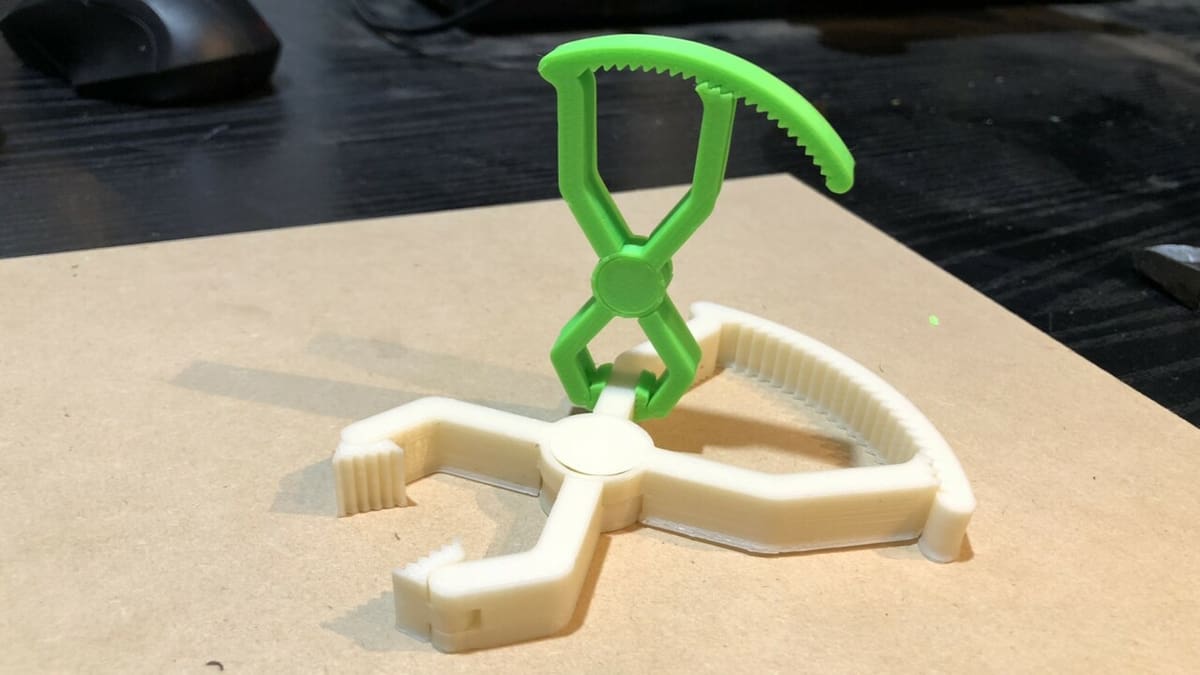
This simple but extremely handy ratchet clamp can be printed as just one piece. Although there are many uses, makers, in particular, will find these clamps useful for holding bits of their creations together while glue or cement sets.
The designer recommends printing in ABS with a 20% infill. They also suggest adjusting horizontal expansion to -0.1 mm to avoid the clamp halves welding together. The model can be printed at different scales depending on how big you need the clamp to be.
- Who made it? luchocarreno
- How printable/popular is it? Well over 20,000 people have downloaded this model and a few have posted pictures of their makes. There are also 18 mostly positive comments about the model.
- Where to get it? MyMiniFactory
We Also Like…
If the ratchet clip isn’t quite working out for you, the C-Clamp can give you an excellent hold on a wide range of surfaces. This model was designed with interchangeable clamp ends, meaning you can swap them out for whatever you need depending on the project.
Sunglasses
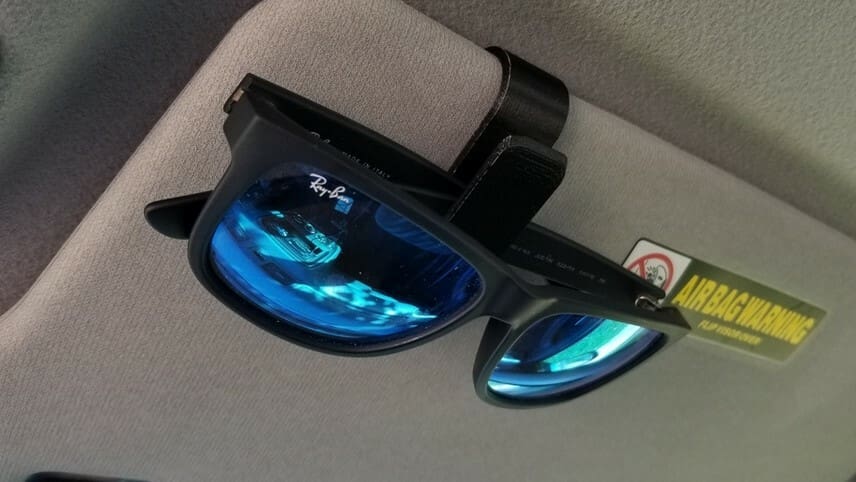
This handy clip attaches your sunglasses to the sun visor in your car. Now, you’ll know where they are, instead of searching around in the console when the sun is shining in your eyes. There’s also a second version of the clip, which has been redesigned to fit a wider range of sunglasses and to try and help with warping when the interior of your car gets hot.
As it follows, printing this model in a material that tolerates high heat is recommended. Commenters have suggested nylon or ABS as good options. PLA is specifically discouraged, as it will soften in the temperatures reached inside a parked car and probably drop your sunglasses.
- Who made it? trevorlong
- How printable/popular is it? 111 people have posted their makes and 17 have shared their remixes.
- Where to get it? Thingiverse
We Also Like…
A more permanent solution for your sunglasses mount needs can be found in the flat mount sunglasses clip. This mount is a more durable and reliable solution, requiring some hardware for both assembly and mounting. Once mounted, the latching arm will keep your sunglasses secure until you need them.
Beach Towel Clip
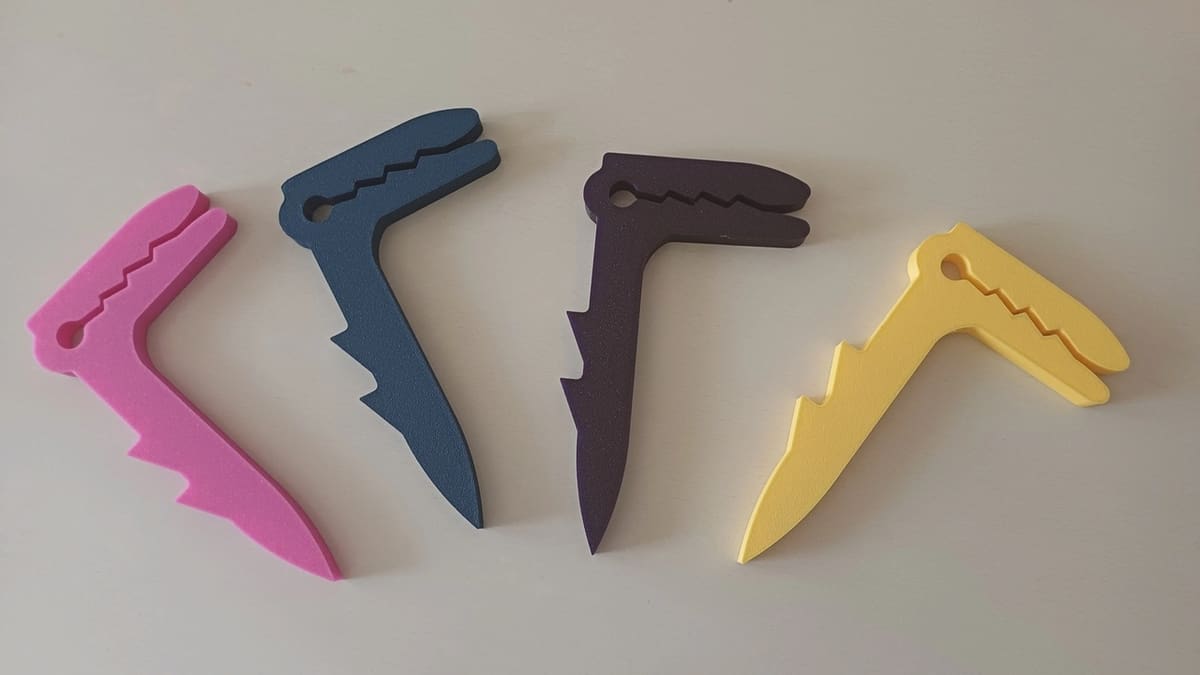
Nothing ruins a trip to the beach more than coming out of the water and finding that your towel has been blown away in the wind. Rather than having to leave your bag or shoes behind to keep your towel weighed down, you can solve this issue with a simple clip.
This print clips onto your beach towel and stakes into the sand. The clamping mechanism will keep a good hold on your towel, though you may want to print a few if you plan on visiting the beach on a particularly windy day.
- Who made it? GCdesign3D
- How printable/popular is it? This clip has been printed over 300 times according to MakerWorld, with plenty of positive reviews.
- Where to get it? MakerWorld
We Also Like…
These croc and shark towel clips come in fun beach-themed shapes that are very cute when printed in multicolor. The stakes are missing the teeth that keep the original model firmly in the sand, though they should still keep your towel in place on mildly windy days while looking the part.
Strong
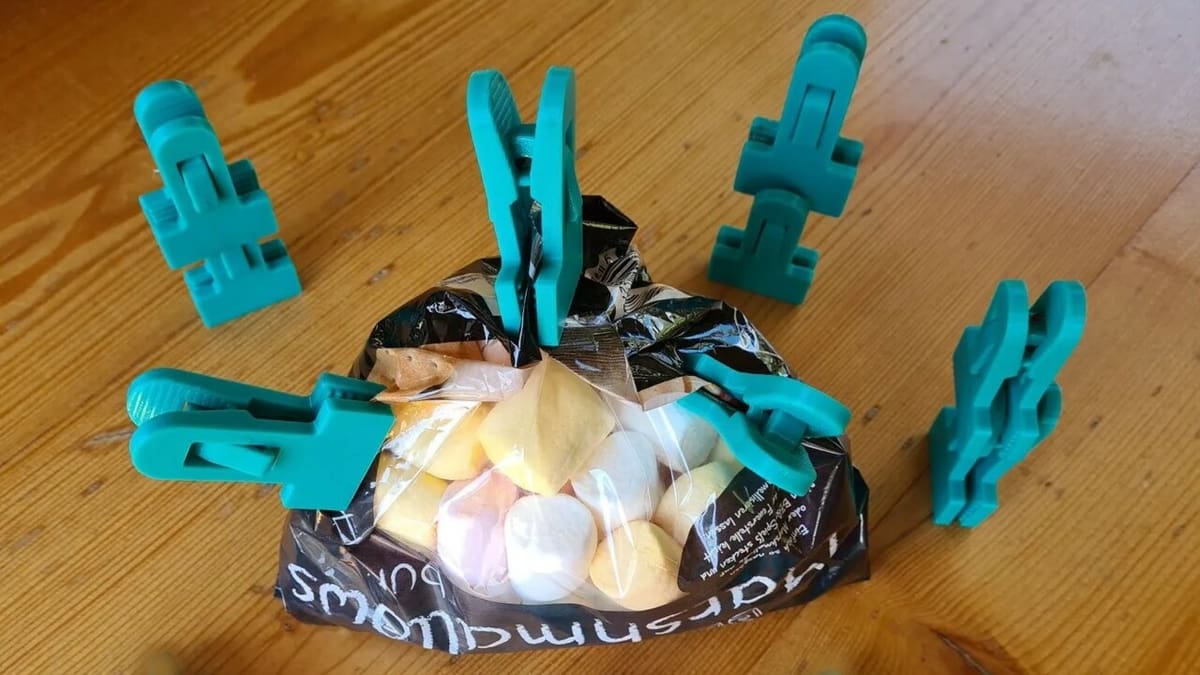
This clip is called “strong” because it has a strong grip and can hold onto things firmly. It’s made up of three parts and while they require assembly, it’s quite intuitive.
The maker recommends printing the clips and spring in PETG at 0.3-mm layer height and 20% infill. For durability, as the spring is the only part that flexes, it’s best to print it at 100% infill.
- Who made it? Wilko_SLO
- How printable/popular is it? This is one of the most popular bag clips on Printables with more than 5,200 downloads and 113 successful makes shared.
- Where to get it? Printables
We Also Like…
Another powerful alternative is the super strong bag clip. The three-part clip snaps together and provides quite a strong grip. The designer recommends using ABS, though PLA will still provide good results.
Filament
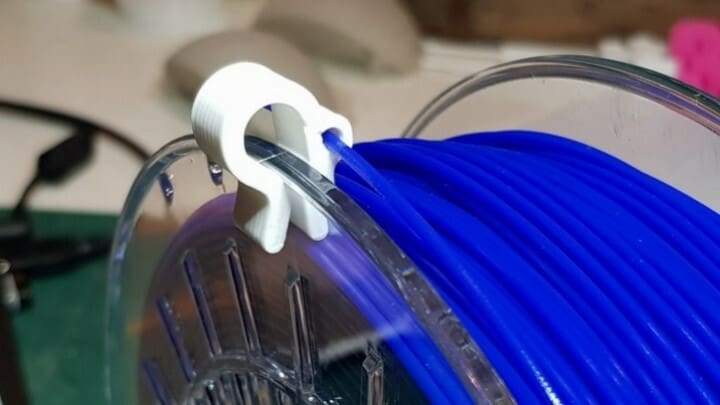
If you’ve ever tried to store a partially used spool of filament, you know the frustrations this next clip is designed to solve. Inevitably, when you remove a partially used spool of filament from your printer, it won’t coil back nicely onto the spool. Instead, it’ll try to unravel and may get tangled when you want to use it again. This clip prevents all of that by securing the loose end of the filament to the side of the spool.
It’s a well-designed clip that has STL files for both 1.75-mm and 3-mm diameter filament.
There’s no guidance on print settings provided by the author. Based on what we see, a high infill percentage is a good idea as well as printing it in ABS or similar filament. PLA may be too brittle for this print, although some have reported success with the material.
- Who made it? Madox
- How printable/popular is it? This model has been printed at least 240 times as seen on the shared makes, and 37 remixes show that, while it’s a practical enough design, it can be customized for a variety of options.
- Where to get it? Thingiverse
We Also Like…
If you want to be extra sure that your filament is not coming undone while in storage, then this flexible filament holder will do the job. The print flexes and sits snugly inside of the spool, keeping itself in place using friction. There is a small hole to run your filament through that will clamp shut and keep your spools free from any tangles.
Plant
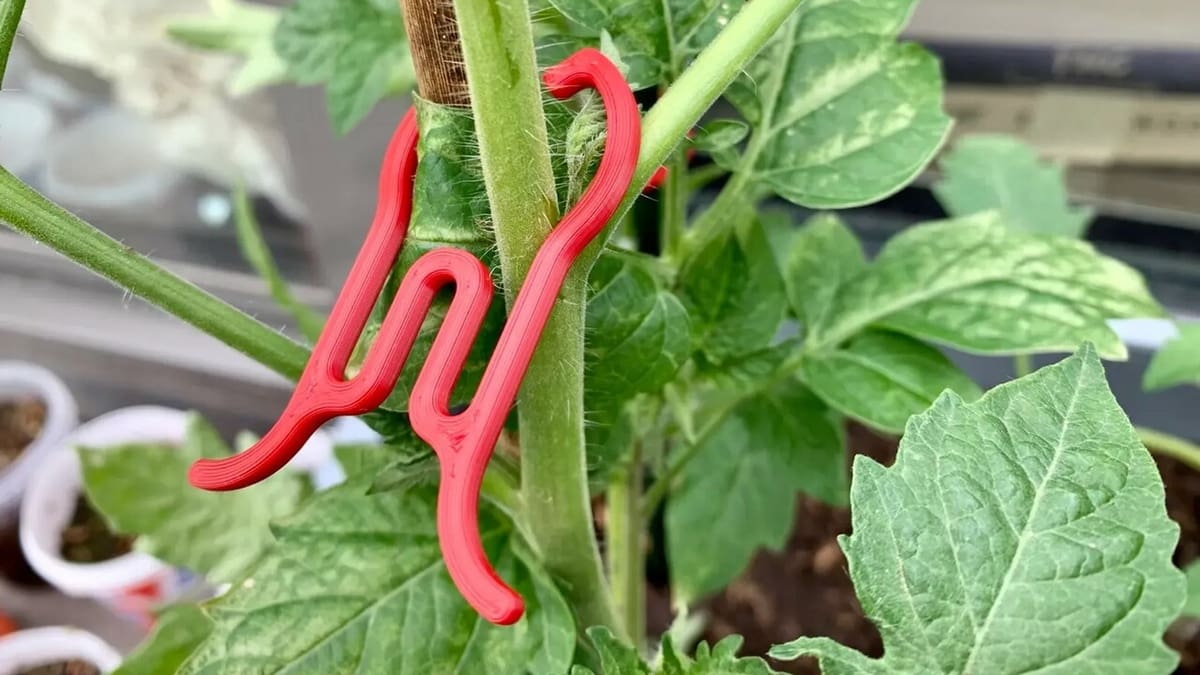
Plants whose stems cannot stay upright need support to grow. These plants are mostly climbers, but there are a few others such as tomato and pepper ones that grow best with supports.
The 3D printed clips can easily grab onto the plants and a stick to hold them upright. You can clip on more of these as your plants grow taller and taller!
- Who made it? fns720
- How printable/popular is it? At least 530 people have downloaded this clip to help grow their plants, with 21 sharing their makes.
- Where to get it? Printables
We Also Like…
Alternatively, the circle plant clip is better suited for plants with wider stems, as the print allows for more wiggle room inside of the clip. It’s also a good choice when growing multiple plants next to each other, as you can potentially fit two or three stems inside of this clip, depending on the size of your plants.
Small
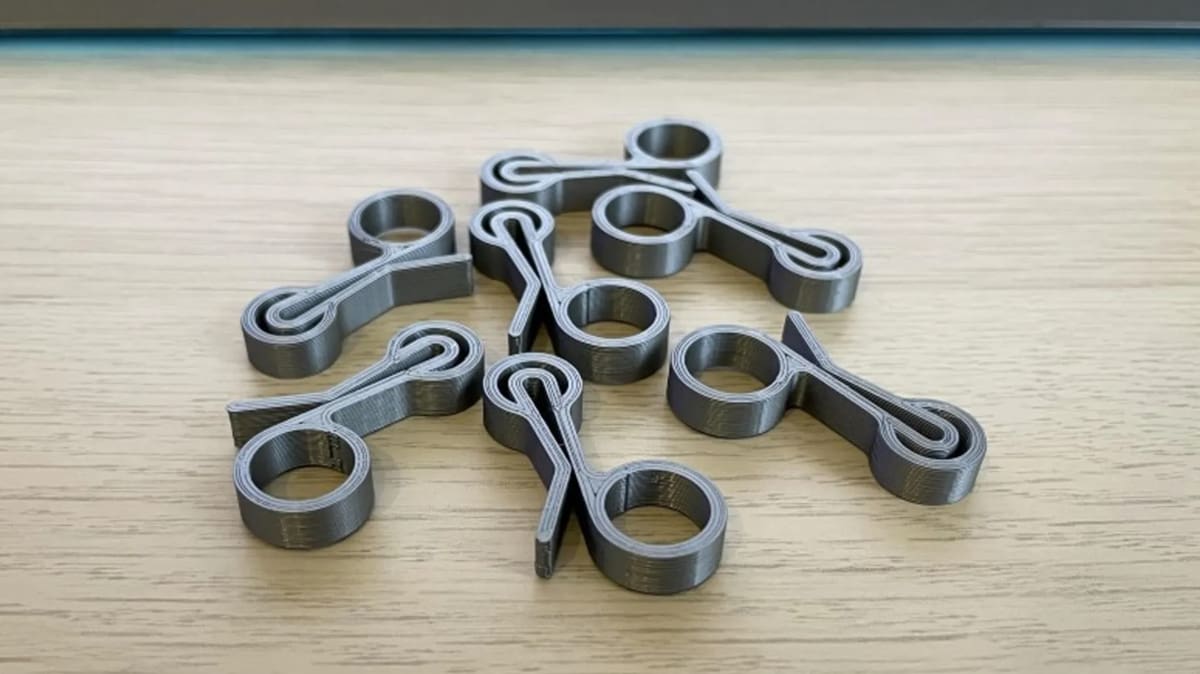
This clip has a small form factor, but it gets the job done perfectly. Its circular hole lets you grab the clip and easily put it on and take it off any bag.
Like some of the makers who’ve shared their prints, you can opt for different colors to distinguish between the various herb and spice bags. You can also easily scale these up and print them for larger bags of snacks and cereal.
- Who made it? MikolasZuza
- How printable/popular is it? This small clip has reached over 57,000 downloads and has over 14,400 likes and an impressive 1,091 makes.
- Where to get it? Printables
We Also Like…
Another great clip for smaller bags is this tiny clip. It takes a negligible amount of filament to print and can be used for everything from loose-leaf tea bags to herbs and more. Makers are a fan of the small size of this clip!
Hinged Cable Clip
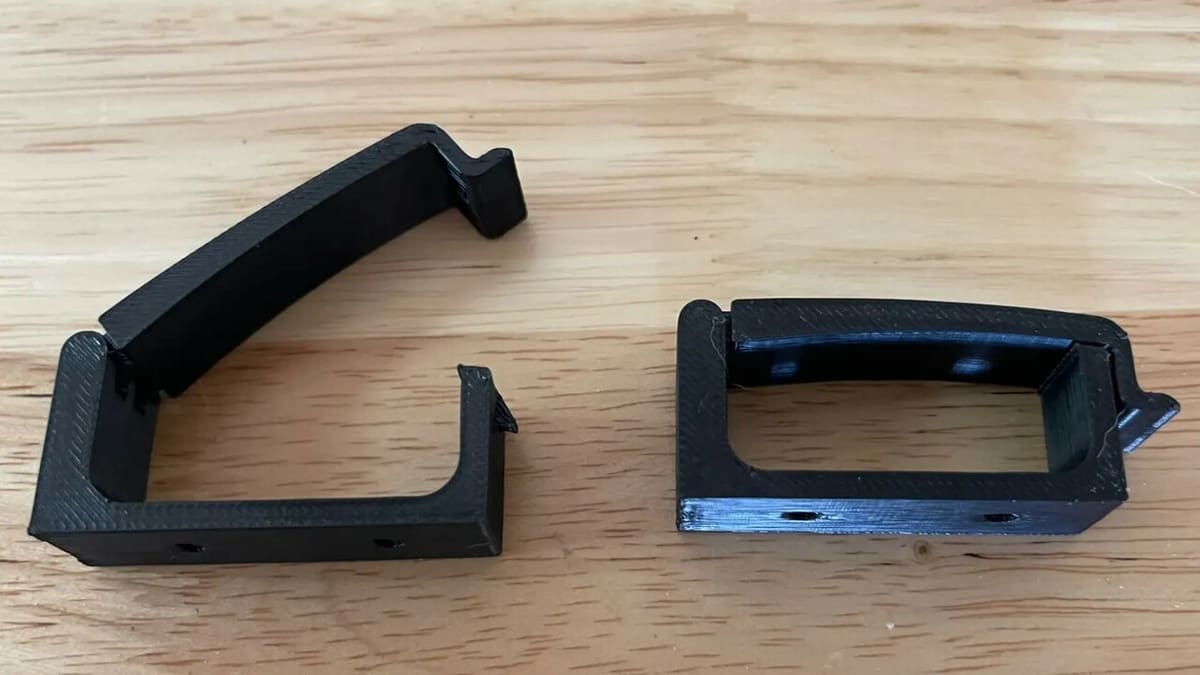
These hinged clips are amazing at keeping your cables tucked away together while keeping the arrangement neat and tidy. They can go a step further than zip ties, as you can screw them onto any platform, table, or wall easily. You can even use these to guide your wires along any surface.
For this clip, the maker suggests using PETG with the print settings of 0.2-mm layer height and 10% infill for the best results.
- Who made it? Jerrari
- How printable/popular is it? This can be easily printed in one piece. Over 50 people have shared their improved cable management with the use of this clip.
- Where to get it? Printables
We Also Like…
If you need to keep your cables separated as well as mounted, then this hinged cable divider may be what you need. It can be mounted with screws, tape, or other adhesives and provides three sections for easy cable management.
Print-in-Place
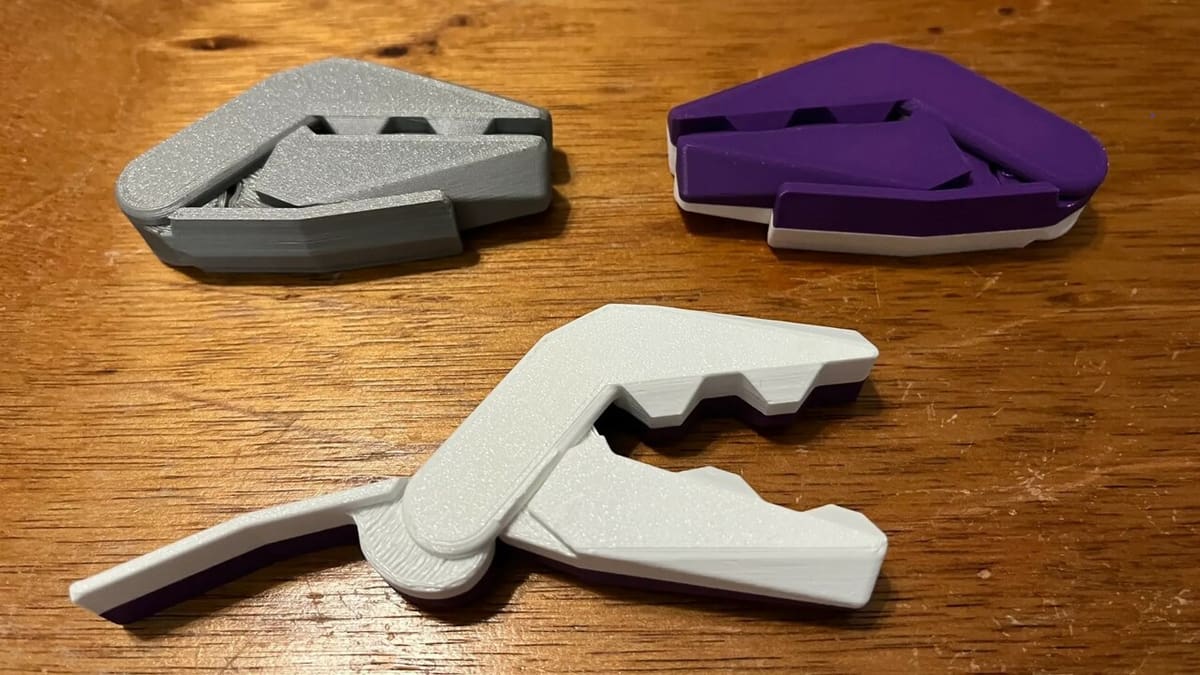
An over-engineered print-in-place bag clip, meaning it’s ready to use after printing and doesn’t need any assembly. It has three moving parts – the lock and the two parts with teeth for grip – all hinged together. The lock is the main part that’s used to fasten this clip and keep the contents of your bags secure.
The designer recommends printing this clip using PLA at 15% infill (which can be bumped up to make the clips more durable) and a 0.15-mm layer height with supports only on the build plate.
If you want to print a scaled-down model of this clip, it’s advisable to print the mini version (scaled down to 40%). As it’s a print-in-place model, you’ll need to configure the clearances after scaling down the parts.
- Who made it? Andrei
- How printable/popular is it? This clip has over 710 recorded makes as well as over 42,000 downloads!
- Where to get it? Printables
We Also Like…
For a little better grip, you may want to check out this print-in-place clip. It has a simple handle and a set of teeth for a tight hold. The model has been through a few revisions, with the designer taking feedback from other makers and implementing some much-needed changes to create a nice print-in-place design.
License: The text of "3D Printed Clips: 15 Must-Have 3D Models to Print" by All3DP is licensed under a Creative Commons Attribution 4.0 International License.




